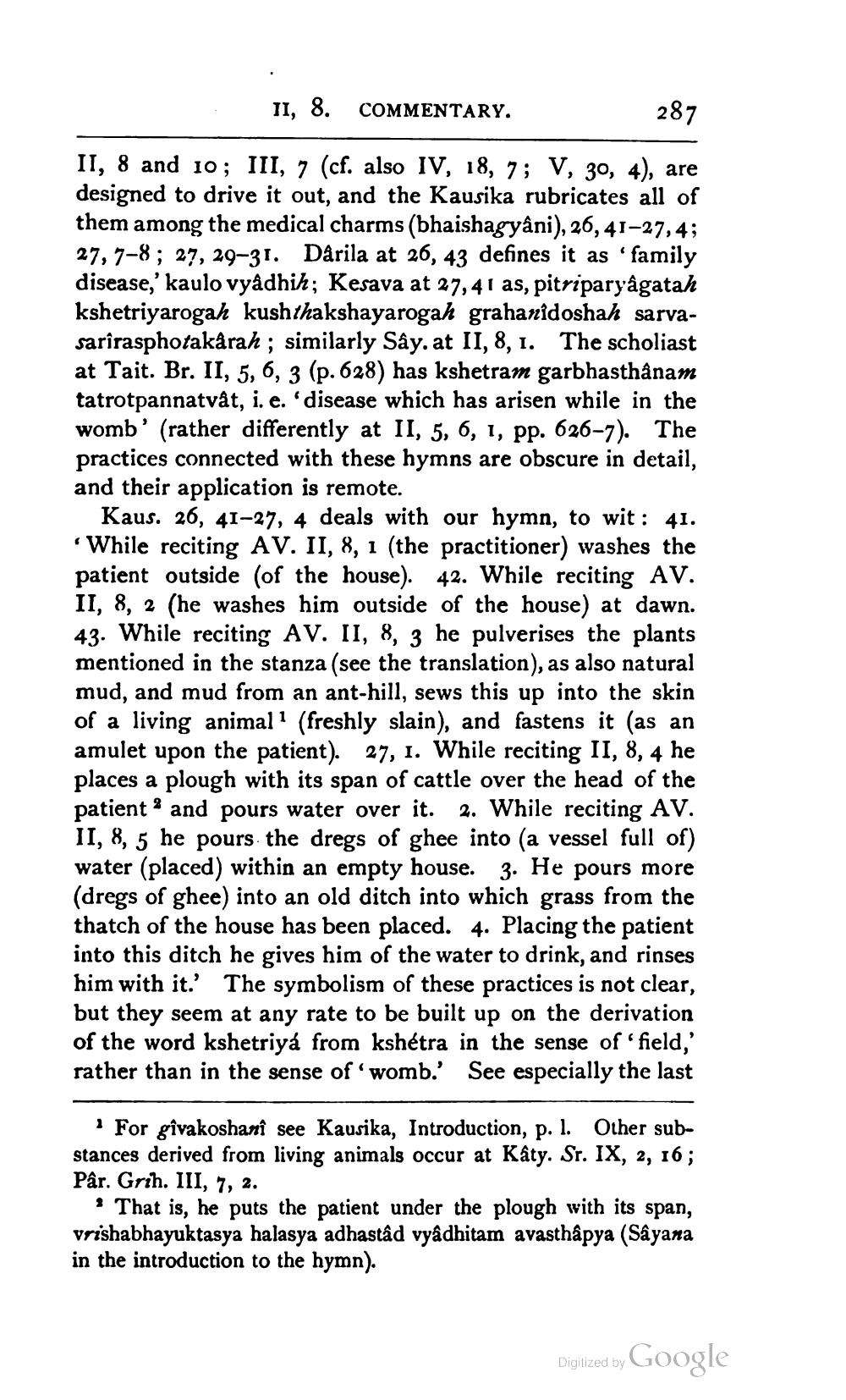________________
II, 8. COMMENTARY.
287
II, 8 and 10; III, 7 (cf. also IV, 18, 7; V, 30, 4), are designed to drive it out, and the Kausika rubricates all of them among the medical charms (bhaishagyâni), 26, 41–27,4; 27,7-8; 27, 29–31. Darila at 26, 43 defines it as 'family disease,' kaulo vyâdhih; Kesava at 27,41 as, pitriparyâgatah kshetriyarogah kushthakshayarogah grahanidoshah sarvasarîrasphotakårah ; similarly Sây.at II, 8, 1. The scholiast at Tait. Br. II, 5, 6, 3 (p. 628) has kshetram garbhasthanam tatrotpannatvåt, i.e. 'disease which has arisen while in the womb' (rather differently at II, 5, 6, 1, pp. 626-7). The practices connected with these hymns are obscure in detail, and their application is remote.
Kaus. 26, 41-27, 4 deals with our hymn, to wit: 41. While reciting AV. II, 8, 1 (the practitioner) washes the patient outside (of the house). 42. While reciting AV. II, 8, 2 (he washes him outside of the house) at dawn. 43. While reciting AV. II, 8, 3 he pulverises the plants mentioned in the stanza (see the translation), as also natural mud, and mud from an ant-hill, sews this up into the skin of a living animali (freshly slain), and fastens it (as an amulet upon the patient). 27, 1. While reciting II, 8, 4 he places a plough with its span of cattle over the head of the patient and pours water over it. 2. While reciting AV. II, 8, 5 he pours the dregs of ghee into (a vessel full of) water (placed) within an empty house. 3. He pours more (dregs of ghee) into an old ditch into which grass from the thatch of the house has been placed. 4. Placing the patient into this ditch he gives him of the water to drink, and rinses him with it.' The symbolism of these practices is not clear, but they seem at any rate to be built up on the derivation of the word kshetriya from kshetra in the sense of field,' rather than in the sense of womb. See especially the last
For gîvakoshanî see Kausika, Introduction, p. I. Other substances derived from living animals occur at Kâty. Sr. IX, 2, 16; Pâr. Grih. III, 7, 2.
* That is, he puts the patient under the plough with its span, vrishabhayuktasya halasya adhastâd vyâdhitam avasthấpya (Sâyana in the introduction to the hymn).
Digitized by Google




